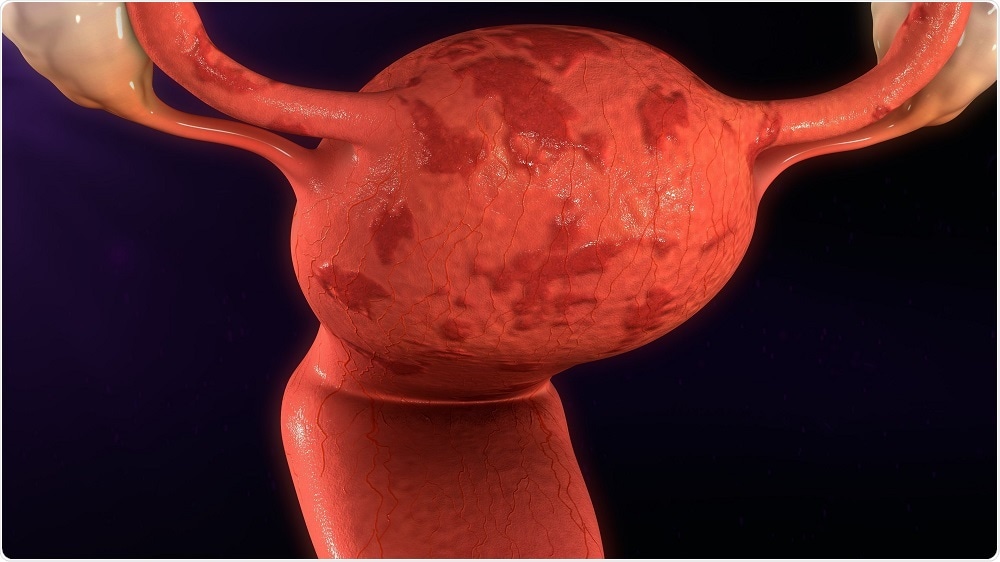Scientists from the University of Cambridge have grown miniature functional models of the womb lining in culture, representing a major step forwards in the study of early-stage pregnancy and conditions such as endometriosis.

Endometrial tissue 3d illustration © sciencepics / Shutterstock.com
Findings from the research, which was funded by the Medical Research Council, the Wellcome Trust and the Centre for Trophoblast Research have been published in Nature Cell Biology.
Margherita Turco and team grew the models, referred to as “organoids,” from endometrium-derived cells, which they then maintained in culture for a number of months. This enabled them to show that the organoids respond to female sex hormones and signals generated during early pregnancy, by secreting “uterine proteins,” which supply the embryo with essential nutrients during the first months of pregnancy.
“These organoids provide a major step forward in investigating the changes that occur during the menstrual cycle and events during early pregnancy when the placenta is established,” explains Turco. “These events are impossible to capture in a woman, so until now we have had to rely on animal studies.”
Previous studies of animal models have demonstrated that factors secreted by endometrial glands are essential in enabling a fertilized egg (referred to as the “conceptus") to implant itself in the womb lining.
Evidence also suggests that the conceptus sends signals to the endometrial glands, that then stimulate growth of the placenta. Using this “communication,” the conceptus therefore essentially stimulates its own development, failure of which would result in either a loss of pregnancy or severely restricted growth of the fetus.
The authors believe that having these organoids will provide important insight into this dialogue between the conceptus and the endometrial glands, potentially enabling them to establish whether parts of this process are faulty in women struggling to conceive. This could lead to the development of new therapies for such women.
Events in early pregnancy lay the foundations for a successful birth, and our new technique should provide a window into [these] events… There’s increasing evidence that complications of pregnancy, such as restricted growth of the fetus, stillbirth and pre-eclampsia – which appear later in pregnancy – have their origins around the time of implantation, when the placenta begins to develop.”
Graham Burton, Director of the Centre for Trophoblast Research and joint senior author of the paper
Furthermore, these organoids could also be grown from endometrial cancer cells to provide a model for the study of endometrial cancer. Similarly, models could be grown to enable investigation of other endometrial diseases such as endometriosis.